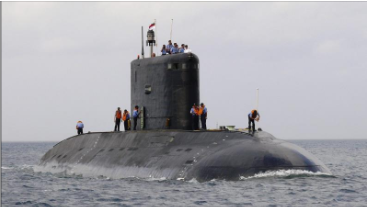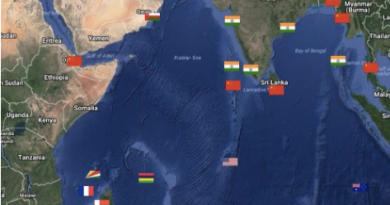India is determined to Nuclearize Indian Ocean
According to India’s Prime Minister Modi, “the Indian Ocean is India’s Ocean” and nowadays this is the stable way of thought in the Indian foreign ministry’s enunciation of military policy. To this dramatic end, a fleet of nuclear power submarines is already planned in India in accordance with its military modernization. And by deploying a nuclear powered ballistic-missile armed nuclear submarine in 2014, India drew IOR into an intense battle for an unimagined regional arms race.Interestingly, the Indian Ocean had never been nuclearized even during the Cold War. In its deployment toward Pakistan and China, the transfer of Indian nuclear weapons capability from land to sea could contribute to a nuclear three-party competitive phase. Through securing the territorial waters of the Indian Ocean Region by abnormal naval modernization, the Indian Naval Force has taken an aggressive vital position. If India avoids dreaming of possessing the Indian Ocean Region (IOR) then this exclusive naval trade hub can be spared from being a zone of conflict.Prime Minister Narendra Modi recently called Arihant’s first deterrence patrol as “historic.” Arihant’s production is part of Indian plans in the coming half-century to induct a fleet of 5 SSBNs to secure second-strike capability. India’s effective presentation of its nuclear power at sea has severe consequences for strategic stability between Islamabad and New Delhi. The power of reciprocal deterrence resides in Indian and Pakistani nuclear capabilities in the shared vulnerabilities in land and air domains. The latest entry of Arihant into the Indian Naval Fleet risks deterrence stability because of the decrease in the magnitude of mutual vulnerabilities. India has indeed rendered the attempts of Pakistan to make IOR a ‘nuclear-free zone’ in jeopardy by introducing SSBN. There are also two more Ship Submersible Ballistic Nuclear submarines under development in India. The domestic military sector of India is also cooperating strongly with western firms in military joint projects. The Indian Naval Force has crossed 140 warships and has been scheduled to put in 56 new warships and 6 submarines.
In this respect, Modi’s trips to littoral states of IOR in 2015 can be categorized as the diplomatic push to materialize this strategy. India plays a risky game in pursuit of global validation and prestige in IOR, where confidence-building measures or institutionalized conflict-resolution appear to be entirely vague. South Asia has no systemic framework to cope with the confrontational actions of regional countries in the IOR. If India is determined to take the path to nuclear strike capacity in IOR, then any potential escalation would be highly unlikely to be tracked.The introduction of nuclear-capable submarines into the Indian naval forces in the sense of conventional rivalries in the region is a major challenge to Pakistan and China. This provocation might push Pakistan and other regional states to unleash similar naval capabilities, thus triggering a fresh arms race in the region.
Source: eurasiareview.com



